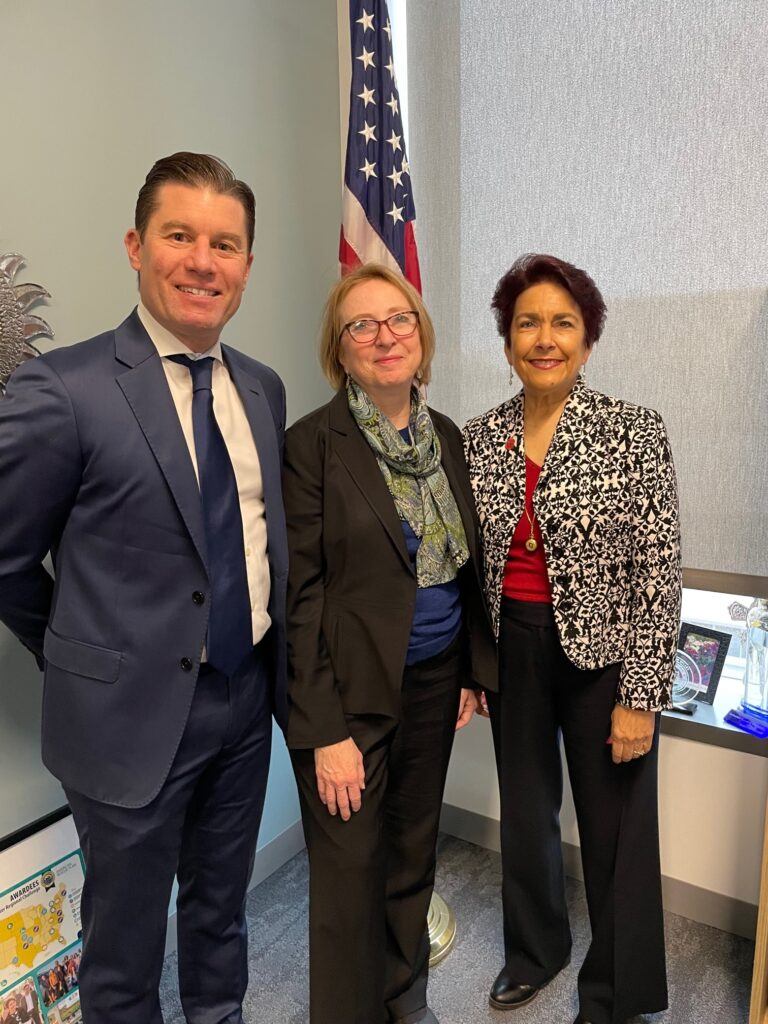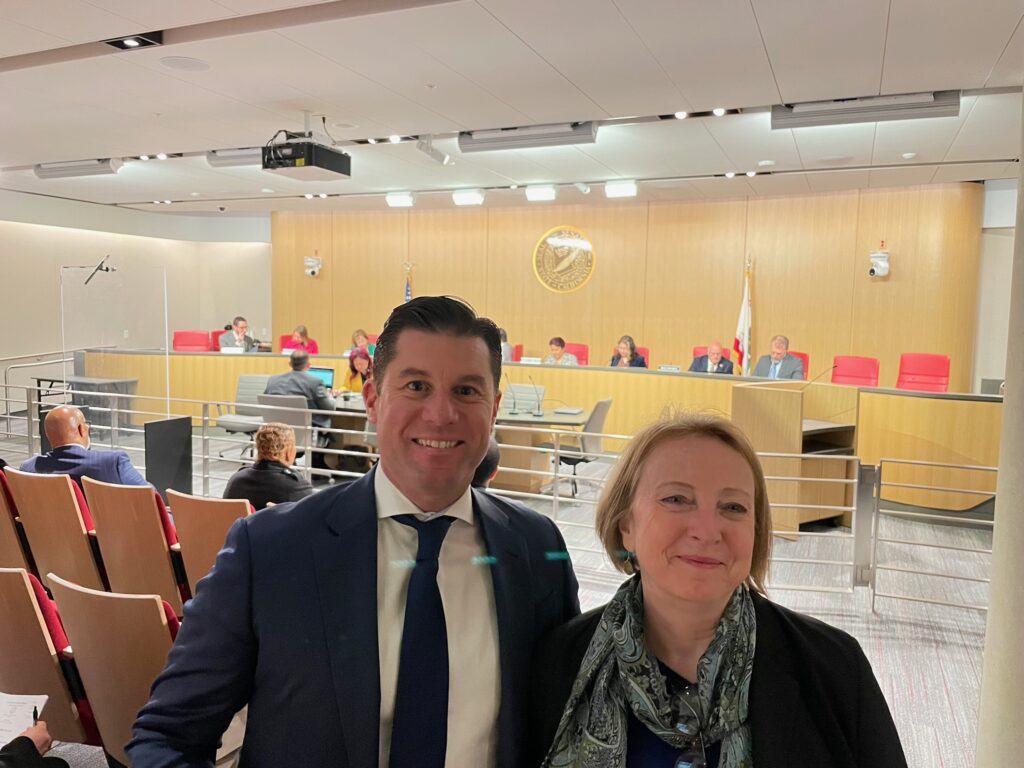
On Sept. 1, the California State Senate voted unanimously in favor of Senate Bill 706 (SB 706), which expands authority for the use of progressive design-build (PDB) by state and local agencies. Today, that bill rests with California Governor Gavin Newsom, awaiting his signature.
Sponsored by the DBIA-Western Pacific Region (DBIA-WPR), SB 706 was introduced in February 2023 by Senator Anna Caballero, who co-authored the bill with Senators Roger Niello and Susan Rubio and Assemblymember Eduardo Garcia. DBIA-WPR immediate past president Brandon Dekker (Principal-Office Practice Leader, CannonDesign) testified in support of the bill at an Assembly meeting in June alongside Senator Caballero and Najee Zarif, Deputy Director of Engineering at San Joaquin County Department of Public Works.
The bill received unanimous approval from the California Senate Local Governance & Finance Committee as well as the State Senate and State Assembly’s Local Government Committee following that testimony. Later, in August, SB 706 passed through the Assembly –– again with unanimous support –– before clearing the Senate and making its way to the Governor at the start of September.
Watch a recording of the June Assembly meeting (54:20).
DBIA-WPR said the “game-changing legislation” aims to grant all cities, counties and special districts in California the authority to use progressive design-build procurement for up to 10 public works projects exceeding $5,000,000 each. They added that SB 706 “could significantly transform the procurement landscape for municipalities across the state,” as before SB 706, PDB was only accessible to select agencies in California, limiting the impact it could have on public infrastructure.
What SB 706 Does and How WPR Got Here
The impetus for SB 706 was rooted in a nebulous interpretation of existing legislation and a growth in the number of successful PDB projects in California, specifically in the State University System and at the San Francisco International Airport.
Although some public and agency Owners interpreted the law as allowing PDB procurement, others argued that while the language did not expressly prohibit its use, it was not strong enough to support its use. Certain local agencies –– including charter cities and community colleges –– enjoyed specific language allowing for flexibility in project delivery, but that language was just ambiguous enough for others to tread cautiously. For instance, California’s Department of General Services (DGS) has shown interest in the approach. However, they had adopted a narrow interpretation of the legislative language and determined they would need more specific guidance prior to releasing projects under PDB procurement. In 2021, DGS initiated legislation AB 137 –– known as the “trailer bill” –– that allowed three of DGS’s projects to be released as PDB with some additional stipulations for reporting.
DBIA-WPR supported the “trailer bill,” and in 2022, they proposed sponsoring broad-based legislation governing PDB in the region. The WPR Board worked with Platinum Advisors to secure Senators Caballero, Niello and Rubio, as well as Assemblymember Garcia to author the bill. Senator Caballero introduced the bill in February 2023 as an extension of DGS’s successful efforts for AB 137.

The bill moved through the Senate Governance & Finance Committee with June’s in-person testimony from Dekker and the other supporters. There were some language changes as the bill passed through the Senate and House, including adding a 2030 sunset clause, changing the number of projects each agency would be allowed to issue and increasing the dollar threshold of eligible projects. Finally, SB 706 was enrolled and presented to Governor Newsom earlier this month.
As of Sept. 28, it is still awaiting his signature.
Key Elements of Progressive Design-Build Success
Like many states, California faces the urgent need for modern facilities that can effectively serve its growing population. However, funding constraints often impede progress, making innovative procurement approaches vital to overcoming challenges related to cost increases, change orders and delays. With SB 706, California’s public works projects will unlock a new era of collaboration, innovation and superior outcomes. By empowering agencies with progressive design-build capabilities, the state will be better equipped to meet the evolving needs of its constituents efficiently and effectively.
Progressive design-build offers a fresh perspective on procurement, design and delivery processes. Agencies can foster greater collaboration and ensure cost and schedule adherence by selecting design-build teams based on qualifications rather than requiring an extensive design package during procurement. Throughout the design/pre-construction phase, the public agency retains control over critical decisions regarding scope, schedule and cost, creating an environment of transparency and shared vision.
PDB supports a collaborative project approach between partners, allowing design and constructability to develop until the guaranteed maximum price is agreed upon. This process requires cost transparency while the project is collectively shaped to the Owner’s unique criteria. PDB supports a diverse team, compensating project partners for work performed and allowing an array of partners with the resources to come to the table. Like any other procurement method, PDB carries its own uncertainty, requiring faith that the selected team can shape the Owner’s criteria into acceptable design, schedule and cost parameters. In practice, however, PDB has been shown to support technically complex projects with bold sustainable design objectives and tends to be the procurement method of choice for Owners invested in participating in the outcome.
Advancing SB 706 in California required dedication from DBIA-WPR, including being responsive to its membership, investing in the right advisory firm, building significant state and local support and entrusting the Board Legislative Committee to lead the way. With the passage of SB 706, DBIA-WPR continues a legacy of commitment to design-build, moving beyond a proving ground for progressive design-build to a hotbed of growth for the procurement method.
“The Board initiated SB706 to support the use of the fundamentally fair and collaborative PBD process,” said DBIA-WPR president Marianne O’Brien, FAIA, LEED AP, DBIA (Principal, SmithGroup). “We weren’t certain if we would succeed in the effort but hoped that our collective of voices would resonate at the legislative level –– and indeed it has.”

